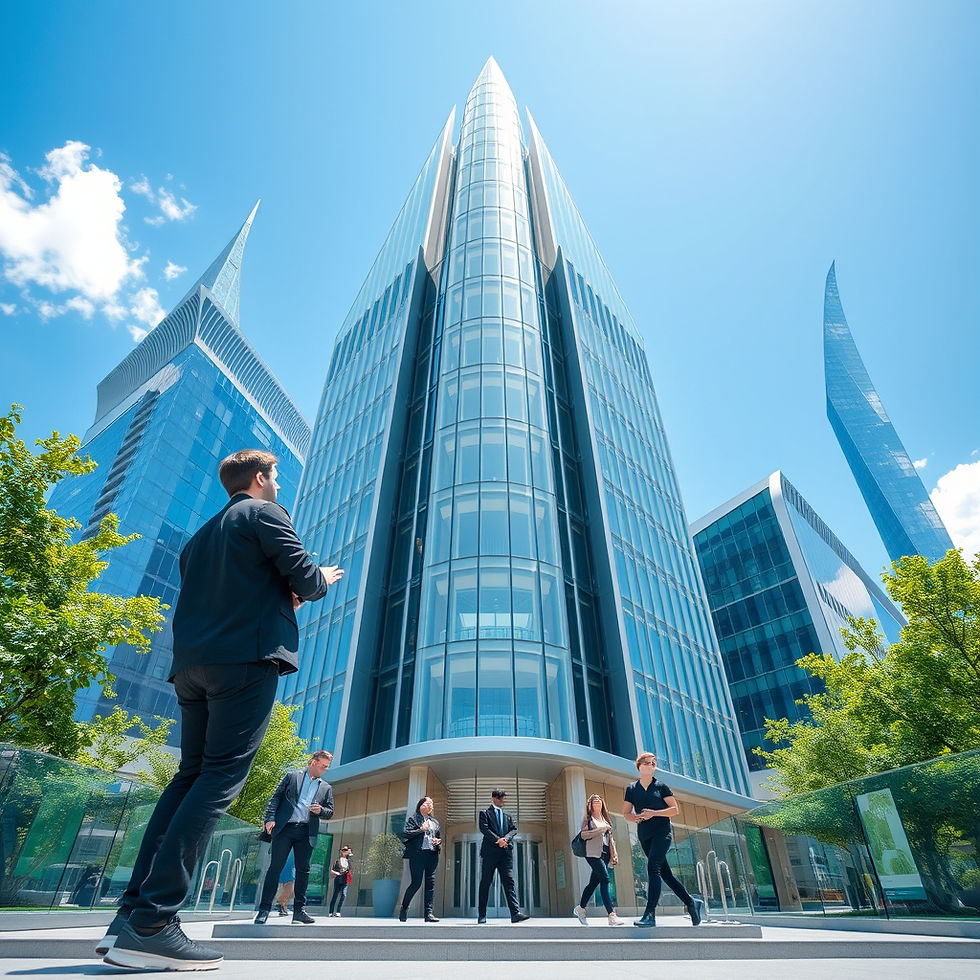The Role of Property Management in Advancing Green Leases
- Chakrapan Pawangkarat
- Mar 26
- 3 min read
Updated: Mar 26
Chakrapan Pawangkarat
Head of Property and Asset Management, JLL Thailand
Board member, Property Management Association of Thailand
26 March 2025

As the demand for sustainable office spaces rises, property managers play a crucial role in implementing and maintaining green lease agreements. By integrating sustainability into daily operations and reporting, property management teams can drive significant environmental and financial benefits for landlords and tenants alike.
What is a Green Lease?
A green lease is a rental agreement that includes sustainability commitments between landlords and tenants. These agreements outline shared responsibilities to improve energy efficiency, reduce water consumption, minimize waste, and enhance indoor environmental quality.
Key elements of a green lease may include:
Energy efficiency requirements, such as using LED lighting and smart HVAC systems.
Water conservation measures, like low-flow fixtures and leak detection systems.
Waste reduction initiatives, including recycling programs and composting.
Sustainability reporting, where both parties track and share environmental performance data.
By adopting green leases, landlords and tenants collaborate to create environmentally friendly and cost-efficient workspaces.
1. Educating and Engaging Stakeholders
A key responsibility of property managers is to bridge the gap between landlords and tenants regarding sustainability goals. This involves:
Educating tenants on energy efficiency, waste reduction, and water conservation practices.
Encouraging collaboration by organizing green initiatives such as recycling programs and energy audits.
Providing transparent reporting on building performance metrics, helping tenants track their environmental impact.
By fostering a culture of sustainability, property managers ensure that both landlords and tenants actively participate in achieving environmental targets.
2. Optimizing Building Operations
Property managers oversee building systems and can drive improvements in:
Energy Efficiency: Implementing smart lighting, HVAC optimization, and renewable energy sources.
Waste Management: Establishing composting programs and increasing recycling efforts.
Water Conservation: Monitoring and reducing water usage through smart meters and leak detection systems.
These measures not only help in reducing the building’s environmental footprint but also lead to lower operational costs for tenants.
3. Enforcing Compliance and Green Certifications
Many green leases tie rental incentives to sustainability performance. Property managers ensure compliance with:
LEED & WELL certification standards, ensuring indoor environmental quality.
National regulations such as Thailand’s Energy Conservation Building Code (ECBC).
Landlord-tenant agreements, ensuring that sustainable commitments are upheld.
Ensuring compliance with these standards not only enhances the building’s sustainability credentials but also improves tenant satisfaction and retention.
4. Sustainability Reporting: Measuring and Communicating Impact
Property managers play a pivotal role in tracking and reporting sustainability performance. This includes:
Energy and Water Consumption Reports: Monitoring and sharing monthly or quarterly consumption data with tenants.
Carbon Footprint Tracking: Calculating emissions from building operations and setting reduction targets.
Waste Diversion Reports: Analyzing waste generation and recycling rates to improve waste management.
Green Lease Compliance Reports: Evaluating adherence to agreed-upon sustainability measures.
Regular sustainability reporting helps demonstrate progress, build accountability, and encourage continuous improvement.
5. Driving Market Trends and Future Growth
Property managers are at the forefront of the shift towards sustainable real estate. They can:
Advocate for ESG investments to attract premium tenants willing to pay more for green-certified spaces.
Adopt digital solutions like AI-driven energy management systems.
Shape leasing policies by incorporating performance-based incentives.
By leading the transition toward sustainability, property managers contribute to the long-term resilience and competitiveness of commercial real estate.
Conclusion
Property management is the driving force behind successful green lease implementation. By educating stakeholders, optimizing operations, ensuring compliance, and implementing sustainability reporting, property managers enhance building sustainability while increasing asset value and tenant satisfaction. In Thailand and Southeast Asia, proactive property management will continue to lead the way in the green property market transition.
Acknowledgement:
"This article was generated with the assistance of ChatGPT, an AI tool, and subsequently reviewed and edited by the author."


